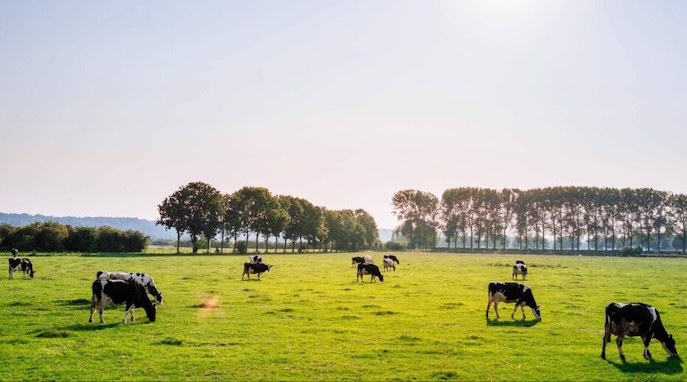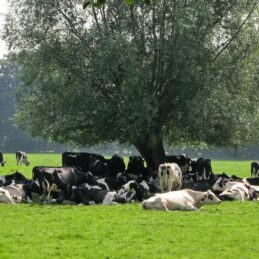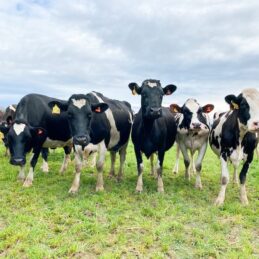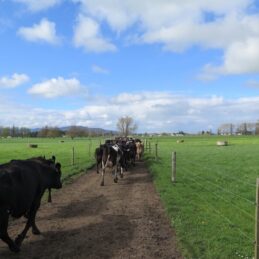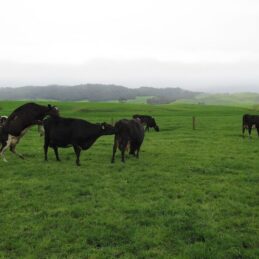New ways to supplement zinc for facial eczema.
Getting enough zinc into youngstock and dairy cattle to help prevent facial eczema is an ongoing challenge. No method is perfect, and blood testing for zinc is critical to ensure serum zinc levels are sufficient for facial eczema prevention. Water, feed and bolusing have been the main ways zinc has been supplemented. Nutritech now also have a loose lick, DanMix® Zinc available as an option.
Facial eczema is caused by a toxin, sporidesmin, which cows eat when grazing pastures high in fungal spores. For every clinical case you see (e.g. redness of the udder, skin peeling, elevated GGT), there will be approximately 10-15 sub-clinical cows showing no signs or symptoms. There is also a lag between the ingestion of spores and the appearance of clinical signs, so monitoring and prevention strategies need to begin well before clinical signs appear.
Prevention is significantly less expensive than the losses from facial eczema. To reduce the number of spores ingested, dilution with other crops or feeds and spraying pasture with fungicide can all help reduce the number of spores consumed.
However, in most cases, feeding zinc (that is ACVM registered for facial eczema prevention) is also required to minimise the effect of facial eczema. Zinc binds to the sporidesmin toxin to stop its chemical reactions from causing damage to the bile ducts and affecting the animal. To be effective, it is important to get an application method that is easy to use and suits the farming system.
Nutritech have recently expanded their facial eczema range to provide high quality zinc and mineral supplementation options to suit different on-farm application methods. For example, zinc for facial eczema can be supplemented via:
- Water – AquaMin® Zinc
- Drenching – FloZinc®
- Feed – NutriMin® Zinc or NutriMin® Silage Balancer Zinc
- Free choice loose lick – DanMix® Zinc
- Custom formulations – specific to your requirements
DanMix® Zinc is the latest addition to the range and has been shown to be especially useful for youngstock out grazing, as well as for dairy cows at the shoulders of the season. Using at the beginning and end of the season allows farmers to save boluses for when pasture spore counts are at high risk levels.
DanMix® Zinc has been used by farmers across the North Island and has proven to be palatable, with livestock regulating their intake at the required dose rate. Additional salt can be added to the container if cattle are consuming levels higher than required (this sometimes occurs when DanMix® Zinc is first put out). It is recommended that a maximum of three days allocation is added to the DanMix® Zinc container at a time, and that the intake is monitored to ensure accurate dosing.
DanMix® Zinc Dose Rate: 1g DanMix® Zinc per 10kg of liveweight dose rate. e.g 100kg calf should regulate their intake at 10g/c/d.
Specification per 25g dose (based on a 250kg animal)
- Zinc: 5g*
- Copper (organic): 75mg
- Cobalt: 5mg
- Iodine: 4mg
- Selenium: 2.5mg
*Contains Global Supa Zinc, a registered zinc oxide pursuant to the ACVM Act 1997 No. A006944
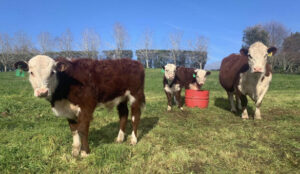
Find out more about DanMix™ Zinc → DanMix® Zinc | Nutritech
Read our informative → Facial Eczema guide
View the → DanMix™ Tech Sheet
Here’s what people are saying about DanMix®
“DanMix® Zinc is great for supplementing on either side of using boluses. It’s much easier to use than bolusing and provides great facial eczema cover when spore counts aren’t quite high enough to warrant bolusing.” – Chris and Kathy Prankerd.
“We purchased DanMix® Zinc for our grazier to give to our calves so that we didn’t have to use boluses” He said it was super easy to use, the calves loved the product, and we had no facial eczema cases.” –Steve and Faye Fabish
“We enjoyed the ease of feeding DanMix® Zinc as well as the flexibility compared to using boluses. If spore counts weren’t too high, we could start feeding DanMix® Zinc rather than commit to the 6 week zinc bolus. We had great results with no facial eczema at our runoff.” – Hayden and Ally Keeling
“We found the DanMix® Zinc very user friendly and easy to use. The calves adapted very quickly to eating it as we mixed it in with some rock salt in a calf meal trough. We feed it every day for 8 weeks from February until April and had no facial eczema this season.” – Mike and Christine Gyde

